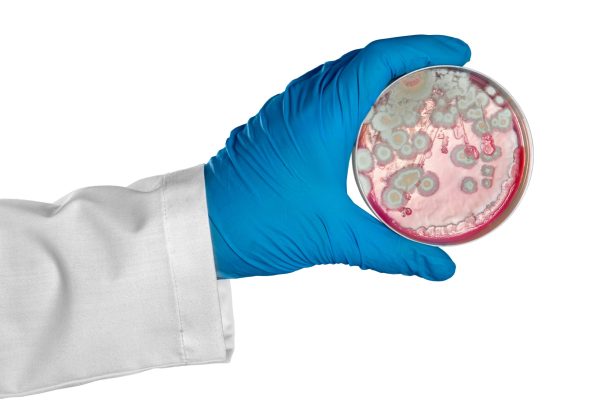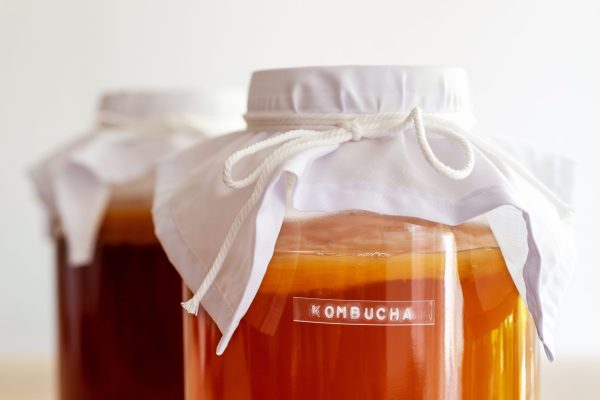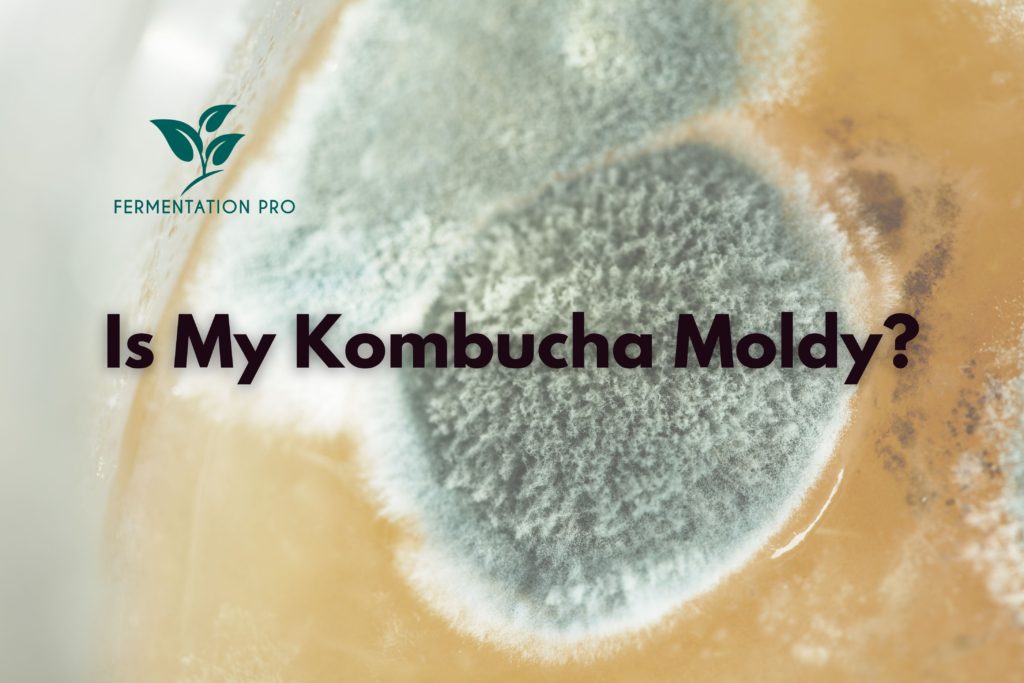One of the rising concerns amongst novice Kombucha homebrewers, especially during their first fermentation process, is kombucha mold. With experience, many kombucha brewers realize that what they mostly tend to consider mold is something else. SCOBY growth inside kombucha bears a stark resemblance to mold growth.
It is imperative to differentiate between the two before throwing away your delicious beverage because of a new SCOBY growth or a false mold scare.
Table of Contents

What is Mold?
Mold is categorized as fungi with no motility that grows rapidly via multicellular structures called hyphae. While feeding on the material it is growing in or on; mold causes inevitable damage.
Many forms of mold grow on damp walls or leaky water pipes. Other species grow on foodstuff high in sugar and nutrients required for mold to thrive and multiply rapidly. Similar to mold growing on a stale bread loaf, kombucha mold is an overgrowth of bad fungus or bacteria in kombucha.
How Does Mold Develop?
With the right temperature, water, food, and oxygen, mold reproduces fairly rapidly by producing small spores. While these spores are invisible to the naked eye, they can disperse via water and wind to long distances. Damp, hot, and aerobic conditions with organic food matter, such as carbon-containing compounds, make the best possible sources for mold development.
When preparing kombucha, it is important to get the proportions of the starter liquid correct. The standard amount for the perfect kombucha recipe requires 90% sweet tea nutrient solution and 10% starter liquid.
The right proportions of starter liquid incorporated in the initial liquid mixture reduce the possibility of developing mold.
It acts as a natural protective barrier against any pathogenic or moldy growth inside the mixture until it has entirely converted to infant kombucha. This process takes about three days and is potentially the most common period for mold development.
The formation of infant kombucha reduces the pH of the initial tea mixture to about 3.5 or even below. Further fermentation over a longer period again causes a decrease in the pH in the range of 2.5-3.5, which is the perfect kombucha pH.
Risks of Developing Mold in Your Kombucha
You are most likely to run the risk of developing mold during the first fermentation cycle. After the first fermentation process is completed, you have successfully evaded the risks of developing mold when your kombucha tastes the perfect amount of acidic and is ready to be bottled. The acidity of your kombucha is always important to be maintained. As soon as your home brewed beverage has reached a pH of 4.5, it becomes almost inhabitable by bacterial and fungal pathogens responsible for mold development.
You may compromise the quality of your kombucha and invite mold growth if you brew your kombucha mixture with a weak SCOBY and/or an inappropriate amount of starter liquid.
Additionally, separating the layers of a single SCOBY strain reduces the barrier’s thickness, which keeps the mold spores away.
Introducing oils or any flavorings into your sweet tea mixture before or during the first fermentation alters the environment of the brewing mixture. It harms the SCOBY and inhibits the natural barrier for mold from doing its job. Temperatures lower than 64 degrees also slow the fermentation process, thereby increasing the chances of potential mold growth. Lower than optimum temperature slows down the process of fermentation. This prolongs the period required for the brew to reach its young kombucha pH of 3.5.
How Do I Tell If My Kombucha Is Moldy?
Since kombucha mold is a rare occurrence, it is easy to spot. To an inexperienced eye, the new SCOBY growth would look like mold at some stage of kombucha formation.
Many people who are new to the brewing process get very curious and excited and may continuously move or disturb their kombucha to look at it frequently. Experts advise not to look at or move around your kombucha container for at least the first seven days.
What to Check to Know If My Kombucha is Moldy
Depth of Mold Formation
In almost all cases of mold developing in kombucha, the moldy growth floats on top of the kombucha culture. Since mold thrives in aerobic conditions and requires air to survive, it is almost always present on the surface of kombucha.
Contrary to common misconceptions, it is not present in the form of an embedded layer in the middle or at the bottom of the culture.

Color of the Mold
Almost all kombucha have similar characteristics, including the categorization of their colors. Depending on the type of mold growing in your Kombucha culture, there can be black, blue, green, tan, or white patches of mold seen on the surface.
In addition to generally known colors that they can be seen occurring in, the texture of the mold could either be dry powder-like or foamy/fuzzy like white foam on top of a beer.
Bacteria and Yeast vs. Mold
Yeast plays an important role in fermentation. With a similar culture requirement for its growth as mold, it is often difficult to differentiate between them. Yeast and bacterial growth on the kombucha are likely to give it a cloudy or foamy texture, similar to mold.
It takes a lot of experience and observation to determine whether your kombucha has mold or a SCOBY formation. Once you have fully understood the difference between the two, it becomes easy to identify mold and take precautions to prevent mold on kombucha in the future.
“Remember, mold will always form on the surface of the brew.”
Even if you see something that resembles mold floating in the brew it is NOT mold, but likely yeast strands.
Preventing Mold on Kombucha

If you are a homebrewer, you may find that your kombucha is getting moldy during fermentation. In some cases, even store-bought kombucha can get moldy. Here are a few ways to prevent mold on Kombucha.
- Use clean water for home-brewed kombucha. If you are unsure about the cleanliness of the water, boil it without the lid for about 10 minutes.
- Use a clean vessel to store your kombucha in. If there is a tap or plug in your vessel, remove it and sterilize the tap and the vessel thoroughly before use.
- Use a good quality starter liquid for your home-brewed beverage. You may use alternatives such as very old kombucha or large amounts of regular quality starter liquid.
- Since kombucha or any other beverage requires warm temperatures to ferment successfully, consider using a heating mat around your container if you live in cold regions.
- Never place your kombucha container in a closed space, for example, a cabinet. Either open the cabinet or place your kombucha container on an open countertop.
- Do not expose the liquid to cigarette smoke at any stage.
Can Moldy Kombucha Be Saved?
If your SCOBY hasn’t turned black yet and there are no formation of molds around it, then it is very possible that you can revive and use your SCOBY again for brewing Kombucha.
A commonly asked question is what is supposed to be done once your kombucha gets moldy. As disappointing as it is, it is time to throw the drink away. Moldy kombucha brew cannot be saved. You may have spent a long time brewing it, waiting for the right time to enjoy your home-brewed drink but sadly, ingesting moldy kombucha brew is hazardous to health.
After throwing away your SCOBY and liquid, it is important to sterilize every tool and equipment used in the process before you reuse it. In case you want to start over with brewing your new batch of tea, use a new SCOBY and sterilized utensils. One of the best ways to eliminate any bacterial or moldy pathogens on your equipment is by using a powered brewery wash (PBW). We use it for our brewing vessels and bottles.
Bonus Tip!
Bacteria and yeast become inactive in temperatures below 65 degrees. Therefore, you must not refrigerate your brewing vessel or your starter tea. It would help if you refrained from keeping your kombucha brew in humid areas. The fermentation process will pause if the yeast and bacteria are inactive or asleep; hence, your brew will not acidify. As a result, your kombucha will have a higher chance of growing mold.
What If I Am Not Sure if it’s Mold?
The most confusing aspect of the distinction between moldy and non-moldy kombucha brew is that normal kombucha may even look weird under some circumstances. If you are not sure whether your kombucha is bad, let it sit for a few days. Once your fermented tea mixture sits for around 4-7 days, it will be easier to find an answer to your question.
You are likely to find two results; your supposed kombucha mold would have grown in size or stayed the same as before. In the latter case, your kombucha has a normal SCOBY growth. However, if the growth starts getting fuzzy it means your kombucha is moldy.








